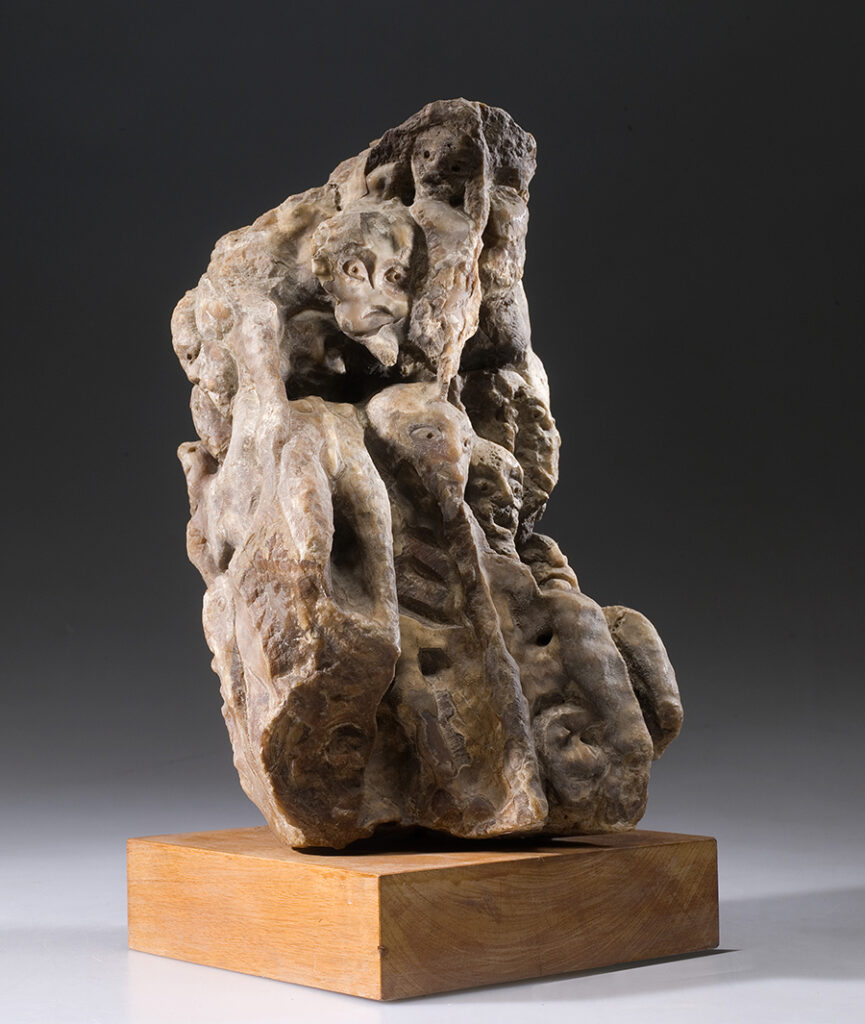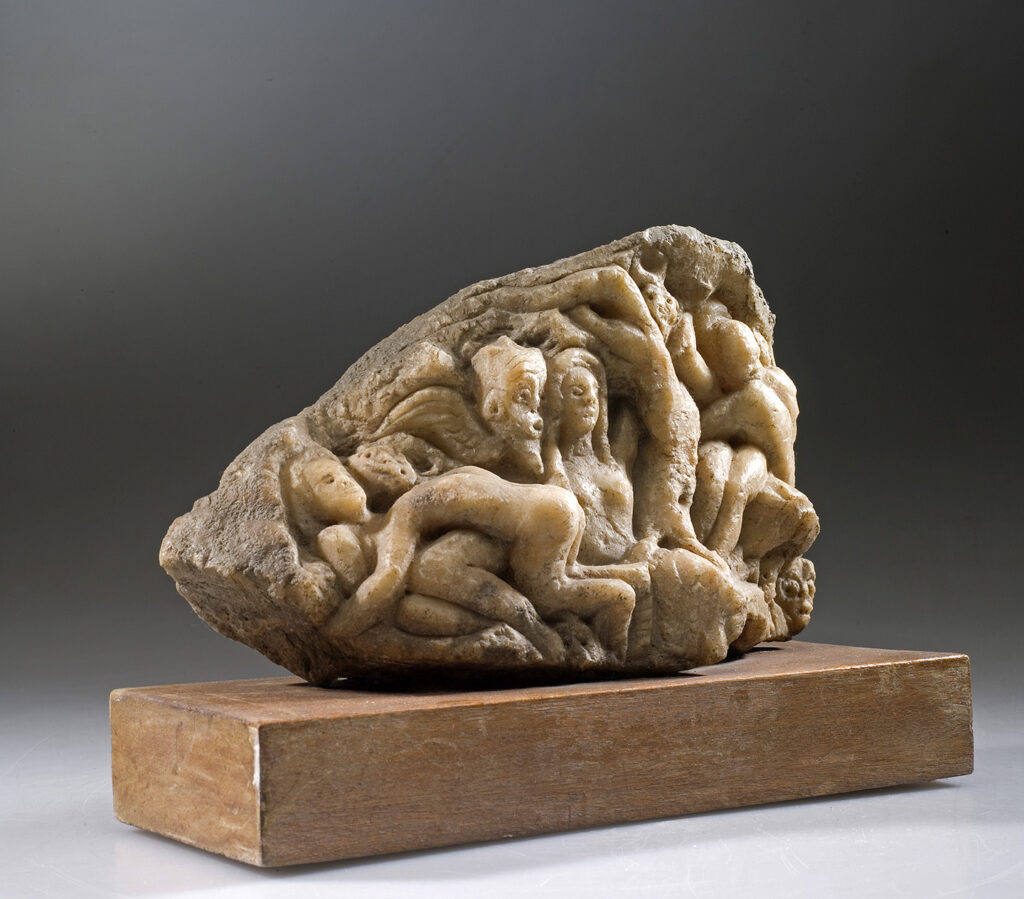Silvio Santini
a young visionary sculptor

The lifestyle of the young sculptor Silvio Santini can be likened to a rainbow of passions pulsating on the waves of the universe. It is well recognisable in what Nietzsche wrote more than a century ago “one must still have chaos in oneself to be able to give birth to a dancing star in Thus Spoke Zarathustra, a book for everyone and no one.
In this initial period, the 70s, which he lived as years of personal and spiritual chaos, his artistic research focused on translating inner voices and emotional impulses directly into the stone. It has been said that hands are the windows to a man’s soul and this is a way of perceiving the young Santini. His hands and his heart sculpted, transmitting heat and vitality to the intimate visions that he glimpsed in the stone.

Santini was preparing to enter the world of art with his first sculptures that had a common theme: inner vision. Hence, these first works represent what the young visionary sculptor felt inside and saw out of the corner of his inner eye. He was overcome with passion and sensual, stimulating or erotic images flowing from his creative imagination that led to the cycle of visionary sculptures.
In this first artistic period, the action appeared to transport his soul to fertile places to bear fruit, like the wind transports pollen that works so marvellously for a new existence. This vitality shines through in each one of his sculptures. Each individual work is a vision, an existential journey and a fantastic exploration, a balance between emotion, form and matter that becomes reality in the stone. His visionary sculptures are similar to Dionysian orgies, where the erotic impulse releases an elegant form of animal-like sensuality. They recall Dante’s hell with its Malebolge or the circle where the lustful ones consumed the lowest desires, the carnal malefactors were condemned,
Who reason subjugate to appetite.
A mixture of passion, eroticism, sensuality, movements of the body and wild dances are all visions evoking the spirit of William Blake. The twenty-five-year-old Santini recognised such visions in the rock formations, in the stalactites and stalagmites inside the Tana dei Tufi (tuff den) in Torano, in the quarry of Statuary white marble in Crestola as well as the Rava quarry, situated on a mountain, which actually looks down onto the village of Torano.

Rock formations that, as our artist explains had everything inside and the form was already present. Some had erotic forms and others not, but they all came to the surface and all he did was accentuate or highlight what he could already see. Mother Nature had already sculpted them over time and then hidden them.
Hence, the series of visionary sculptures, composed of ten works, needed no planning or study. It was merely Santini’s inner and artistic eye able to see sculptures in the stalactites and stalagmites that he then masterfully modelled by hand. With just a hammer and chisel, he gave them that vital breath that still enchants us today. The visionary sculptures therefore represent Silvio Santini’s first artistic period where the stone, caressed by soft hands, took shape and came to life. The young visionary sculptor managed to seize their essence and turn them into art.
